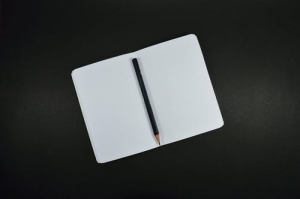 Analytical essay writing is understood as a research method that allows you to study specific parts of an object. Besides, analytical essays do analyze a specific problem in a topic, that is, consider the problem itself and identify patterns in it. The object of analysis can be a well-known or little-studied scientific phenomenon, scientific or artistic work, a historical event, a social problem, or something else.
Analytical essay writing is understood as a research method that allows you to study specific parts of an object. Besides, analytical essays do analyze a specific problem in a topic, that is, consider the problem itself and identify patterns in it. The object of analysis can be a well-known or little-studied scientific phenomenon, scientific or artistic work, a historical event, a social problem, or something else.
Analytical Essay Topic Selection and Object Of Study
The content of the analytical essay will largely depend on what is chosen as the object for analysis. So, when considering a scientific work (dissertation, thesis, scientific article), an essay can be devoted to the study of the reliability of the study, its potential, or the analysis of the conclusions obtained in it. When considering a work of art, the artistic techniques of the author or the problems raised in the book can be analyzed. For this reason, it is very important to accurately determine the topic and object of study.
If the teacher gave you a too broad topic or provided you with the opportunity to choose the topic of the essay yourself, we recommend dwelling on one small question that can be considered on several pages. To help you, the material on choosing an essay topic.
Working with Analytical Essay Literature
An analytical essay is too short to include many quotations and refer to different authors, as is done in abstracts and similar works. And yet it must contain links to sources. This eing an analysis of scientific work, then one can refer to authoritative scientists and their works. In the case of compiling an analytical essay on a book or film, such sources can be reputable publications, writers, film critics, etc. Here, one need to properly examine not only the object of analysis itself, but also what society says about it. With quotes, your essay will be complete and more detailed, which always has a stronger effect on the reader.
When writing an analytical essay, keep in mind that large quotations are not welcome even in voluminous works such as thesis. Therefore, find short and succinct statements and rewrite them carefully before you start writing an essay. Also remember that you need to write out the details of each book or article that you refer to in the essay.
Preparing a plan for an analytical essay
The outline is not a required element of the essay and will not be included in it, but its presence will greatly facilitate the process of writing an essay.
The General Structure of an Analytical Essay Outline is as Follows:
- Introductory part;
- Main part:
- Thesis, analysis, argument;
- Thesis, analysis, argument;
- Thesis, analysis, argument;
- Final part.
Fill in this framework with specific data, writing in the water section the main statement of your work (thesis) that you will be proving. Also write out the points and arguments for the main part. Now you just have to describe in detail each pair of thesis-argument, analyze it and add interesting details (statistics, history, describe an observation, etc.).
 Working with Analytical Essay Text
Working with Analytical Essay Text
In the introduction of the essay, you need to indicate the object of analysis and your main thesis on the topic of work. For example, if your essay focuses on the impact of computer science on student achievement, your thesis may be that computer science is associated with lower student achievement. It is this statement that you have to prove in the main part with the help of a number of arguments.
In the main part, you must first present the strongest thesis confirming the main thesis, then analyze and argue your statement. For example, in the example of computer science, one of the theses may be that computer science reduces the student’s interest in real life, including study. You analyze how exactly this happens, and provide proof of the results of research on this issue by any company.
Due to this, moving into several statement, one will gradually reveal the topic of the essay. Not forgetting that the thesis should not have repetition in the meaning and should reveal your main statement.
Finally, go back to the key point and describe it more fully, based on what you proved in the main part. Do not forget that you are not writing a rigorous scientific work, so you need to finish your essay effectively.
 Preparing an Analytical Essay For Delivery
Preparing an Analytical Essay For Delivery
When the text is ready, do not be lazy to study the rules for preparing an essay, proofread it for errors and inaccuracies, as well as correctly format and print. Many people get their works back precisely because they are not designed in the way that university manuals or state standards require. The presence of a large number of mistakes can also play against you, so if you have low literacy, seek help from those who are competent in this.
By following all the rules for writing and formatting an analytical essay, you will not only be able to get a high mark, but also gain invaluable experience in preparing works of this type.
For writing sample Click Here
Do you need a similar assignment done for you from scratch? We have qualified writers to help you. We assure you an A+ quality paper that is free from plagiarism. Order now for an Amazing Discount!
Use Discount Code "Newclient" for a 15% Discount!
NB: We do not resell papers. Upon ordering, we do an original paper exclusively for you.


 What is a Research Hypothesis?
What is a Research Hypothesis?
 A hypothesis is a structural element that must be indicated in the introduction of the diploma. However, practice shows that it is advisable to formulate it much later, when the object and subject of research has been studied, a theoretical basis has been created, and there is a plan for empirical research.
A hypothesis is a structural element that must be indicated in the introduction of the diploma. However, practice shows that it is advisable to formulate it much later, when the object and subject of research has been studied, a theoretical basis has been created, and there is a plan for empirical research.
 Where can I get information for a medical literature review?
Where can I get information for a medical literature review? Theme Selection on a Research Paper
Theme Selection on a Research Paper the introduction, the author substantiates the chosen topic, briefly explains what his scientific interest is.
the introduction, the author substantiates the chosen topic, briefly explains what his scientific interest is.
 An annotated bibliography is an expanded version of a regular bibliography –those lists of sources that you find at the end of a research paper or book. The difference is that an annotated bibliography contains an additional feature: a paragraph or annotation under each bibliography entry.
An annotated bibliography is an expanded version of a regular bibliography –those lists of sources that you find at the end of a research paper or book. The difference is that an annotated bibliography contains an additional feature: a paragraph or annotation under each bibliography entry.
 Other factor that might be affected by a particular assignment and teacher is how deeply you read each of these sources. At some point you will expect to read each source carefully before putting it into your annotated bibliography.
Other factor that might be affected by a particular assignment and teacher is how deeply you read each of these sources. At some point you will expect to read each source carefully before putting it into your annotated bibliography. Abstract conclusion usually consists of a summarizing paragraph and conclusions based on the goals and objectives of the research. This is the most important part of the work, summarizing all the material presented before. The results should be summed up in your own words, and not direct quotes from the previous text. The formulation must include the justification for the judgments expressed in the work. For a better perception of the material, it is advisable to write conclusions in a thesis, and not in continuous text, separately describing the results of each of the sections of the abstract.
Abstract conclusion usually consists of a summarizing paragraph and conclusions based on the goals and objectives of the research. This is the most important part of the work, summarizing all the material presented before. The results should be summed up in your own words, and not direct quotes from the previous text. The formulation must include the justification for the judgments expressed in the work. For a better perception of the material, it is advisable to write conclusions in a thesis, and not in continuous text, separately describing the results of each of the sections of the abstract. How to Draw an Abstract conclusion
How to Draw an Abstract conclusion conclusion should not exceed one or two printed sheets. First of all, the theoretical part is summarized, after – the practical research.
conclusion should not exceed one or two printed sheets. First of all, the theoretical part is summarized, after – the practical research. If you are in doubt about how your thesis or dissertation should be structured, always check the recommendations and consult with your supervisor, or seek professional help, to help you draw up a work plan correctly. will provide comprehensive assistance and advice on other issues of writing a dissertation.
If you are in doubt about how your thesis or dissertation should be structured, always check the recommendations and consult with your supervisor, or seek professional help, to help you draw up a work plan correctly. will provide comprehensive assistance and advice on other issues of writing a dissertation.
 Scientific Article Writing Requirements
Scientific Article Writing Requirements Where to publish a scientific article?
Where to publish a scientific article? Methodology is referred as the overarching rationale and strategy of your research. Methodology development involves research method studying used in your field and the theories that underpin them, this helps to choose the approach that best suits your objectives.
Methodology is referred as the overarching rationale and strategy of your research. Methodology development involves research method studying used in your field and the theories that underpin them, this helps to choose the approach that best suits your objectives.


